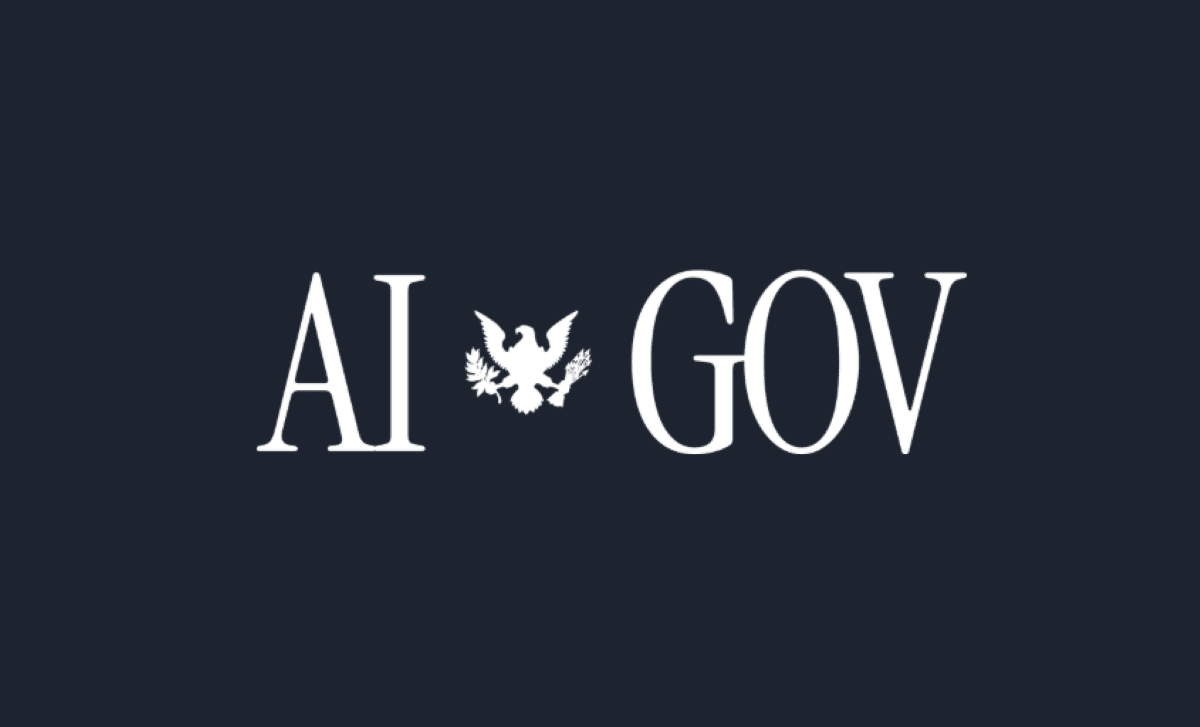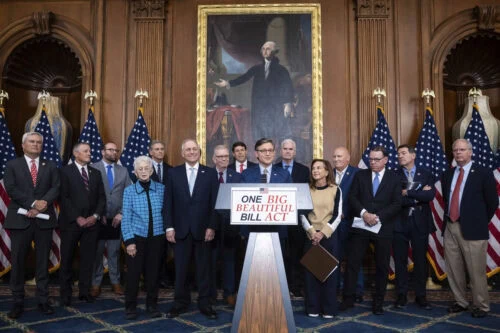Based on the official July 23, 2025, release and full Action Plan
On July 23, 2025, the White House released “Winning the AI Race: America’s AI Action Plan” in response to Executive Order 14179, issued by President Trump in January. The plan outlines over 90 federal policy actions intended to advance U.S. leadership in artificial intelligence across three key pillars:
-
Accelerating Innovation
-
Building American AI Infrastructure
-
Leading in International Diplomacy and Security
The stated goal of the plan is to ensure the United States remains globally dominant in artificial intelligence for economic competitiveness, national security, and technological leadership.
Pillar I: Accelerating Innovation
This section details federal actions to promote AI development and adoption. Key policies include:
-
Removing Federal Regulatory Barriers: Directs agencies to identify and revise or repeal regulations deemed to hinder AI growth.
-
Free Speech Protections in AI Systems: Updates federal procurement guidelines to require that contracted language models be free from ideological bias.
-
Encouraging Open-Source and Open-Weight Models: Supports a policy environment that facilitates open AI development.
-
Workforce Development: Expands training programs and tax-incentivized employer reimbursement for AI-related education.
-
Scientific Research: Invests in AI-enabled science, including lab automation, national datasets, and AI model evaluation.
-
Government Adoption: Formalizes cross-agency coordination and expands procurement tools for AI deployment across federal agencies.
-
Defense Applications: Establishes a virtual proving ground and prioritizes DOD access to AI infrastructure during national emergencies.
Pillar II: Building American AI Infrastructure
This section outlines infrastructure and energy initiatives required to support domestic AI expansion. Key initiatives include:
-
Permitting Reform: Streamlines environmental and regulatory approvals for data centers, fabs, and energy infrastructure.
-
Power Grid Development: Plans for stabilizing and expanding the national grid to support AI-related energy demands.
-
Semiconductor Manufacturing: Expands domestic chip production through targeted CHIPS Act investments and deregulation.
-
Skilled Trades Pipeline: Develops national workforce strategies for electricians, HVAC technicians, and other AI-related roles.
-
Cybersecurity: Establishes an AI-specific information-sharing framework and promotes secure-by-design AI systems.
-
Incident Response: Incorporates AI system failure preparedness into national cyber response protocols.
Pillar III: International AI Diplomacy and Security
This section presents the U.S. strategy for influencing global AI governance and protecting American technology. Major actions include:
-
Exporting U.S. AI Technology: Supports industry consortia to deliver AI solutions to allied nations.
-
Countering Foreign Influence: Expands U.S. participation in international AI standards bodies and opposes authoritarian control of AI norms.
-
Enforcing Export Controls: Strengthens monitoring and enforcement of advanced compute and semiconductor technology restrictions.
-
Global Coordination: Promotes multilateral alignment on AI export controls and protection measures.
-
National Security Evaluations: Establishes programs to assess potential risks posed by frontier AI models and foreign AI technologies.
-
Biosecurity Measures: Implements safeguards against malicious use of AI in synthetic biology and nucleic acid synthesis.
International Strategy: Export, Governance, and Controls
The Action Plan outlines several priorities under its international diplomacy and security pillar:
-
Export of U.S. AI Technology: The Departments of Commerce and State, along with export financing agencies, will coordinate to deliver secure “full-stack” AI export packages, including hardware, software, and standards, to allied nations.
-
Participation in Global Governance: The U.S. will increase engagement in international AI governance bodies to promote innovation, counter authoritarian influence, and prevent the adoption of standards that do not align with U.S. strategic goals.
-
Export Control Enforcement: The plan proposes stronger enforcement mechanisms to prevent diversion of U.S. AI compute resources and semiconductors to countries of concern.
-
Coordination with Allies: The U.S. will encourage allied nations to adopt complementary export controls and technology protection measures to limit access by strategic adversaries.
A quote from Secretary of State and Acting National Security Advisor Marco Rubio frames this pillar: “Winning the AI Race is non-negotiable.”
Federal AI Policy and Procurement Standards
The Action Plan includes provisions for how federal agencies will approach AI procurement, regulatory guidance, and model evaluation. Key actions include:
-
Procurement Guidelines: Federal agencies will only contract with developers of frontier large language models (LLMs) whose systems are considered objective and free from “top-down ideological bias.”
-
Guideline Revisions: The National Institute of Standards and Technology (NIST) will revise its AI Risk Management Framework to remove references to misinformation, climate change, and DEI.
-
Funding Criteria: Agencies will be instructed to consider a state’s AI regulatory environment when awarding federal funds, with a preference toward regulatory environments that are not deemed restrictive to innovation.
These guidelines are positioned in the Plan as measures to align federal AI strategy with national objectives related to innovation, security, and constitutional principles.
Domestic Workforce and Education Initiatives
The Plan emphasizes preparing U.S. workers for the impact of AI through:
-
Workforce retraining for displaced workers via the Department of Labor
-
Increased AI literacy across career and technical education (CTE) programs
-
Tax-free reimbursement eligibility for employer-sponsored AI upskilling under Section 132 of the IRS Code
-
Creation of an AI Workforce Research Hub to analyze labor market trends, AI-driven job shifts, and retraining outcomes
Scientific Research and Open Data Strategy
The Plan includes major investments in AI-enabled science and open data:
-
Federal agencies will fund automated cloud laboratories and Focused Research Organizations for AI-based experimentation
-
A new directive requires publicly funded researchers to release non-sensitive datasets used in AI model training
-
A whole-genome sequencing initiative on federal lands is proposed to support biological model development
-
NIST will lead the creation of data quality standards across disciplines such as biology, chemistry, and materials science
AI Safety, Evaluation, and Incident Response
Multiple sections address evaluation standards, model safety, and national security risk mitigation:
-
Creation of a federal AI evaluation ecosystem, with testbeds and best-practice exchanges across agencies
-
Investment in AI interpretability, robustness, and control, particularly for defense and high-stakes applications
-
Formalization of AI-specific incident response protocols across agencies, including updates to cybersecurity playbooks
-
Coordination with AI developers to assess potential national security risks in frontier models
Synthetic Media and Legal System Protections
The Plan addresses concerns about deepfakes and AI-generated misinformation:
-
The Department of Justice will develop legal standards and evidentiary guidance related to deepfake media
-
NIST may convert its deepfake detection research into formal federal forensic benchmarks
-
These policies follow the passage of the TAKE IT DOWN Act, targeting non-consensual explicit synthetic media
Secure Infrastructure and Defense Readiness
Several initiatives focus on ensuring that U.S. AI systems and infrastructure remain secure:
-
High-security data centers for classified military and intelligence AI use
-
Expanded classified compute environments
-
Agreements with private AI infrastructure providers for emergency DOD access
-
Cybersecurity initiatives to prevent model tampering, adversarial attacks, and data poisoning
Implementation and Oversight
The Action Plan, spanning over 90 proposed actions, is intended to guide immediate and near-term federal policy on artificial intelligence. According to the White House, the document serves as a blueprint for reinforcing U.S. dominance in AI development, infrastructure, workforce readiness, global standards setting, and national security applications.
It assigns responsibilities to agencies including the Department of Commerce, Department of Defense, Department of Labor, Department of Energy, and the Office of Science and Technology Policy. Coordination will occur through existing councils and new initiatives such as the AI Workforce Research Hub and the Chief Artificial Intelligence Officer Council.
The full plan can be accessed at AI.gov.
📍 Want to explore AI-safe career paths and upskilling options in this shifting economy?
Check out our Resource Hub and subscribe to the Diversity Digest!




